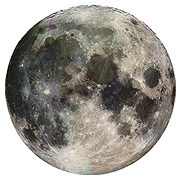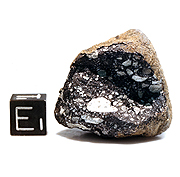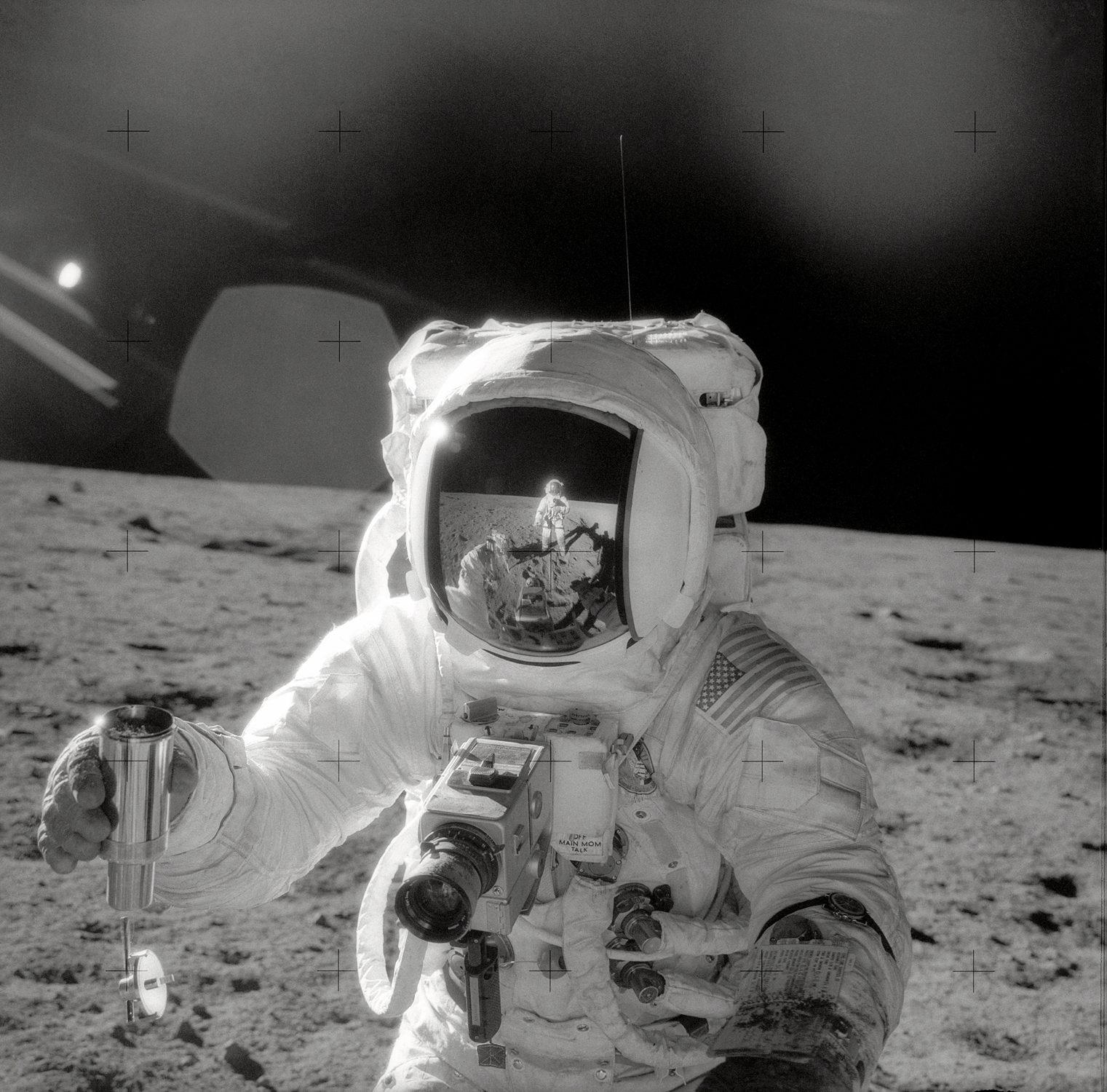Moonstruck

Enlargement
The lunar maria are the smoother, darker areas visible to the naked eye. The lunar highlands are bright and cratered. |
The Moon is no exception; it has also sent us precious meteorites. Some pieces of our satellite were thrown off during huge collisions and eventually crossed the Earth's orbit. The record for the longest voyage between the Moon and our planet belongs to a meteorite found in Antarctica. It meandered through space for more than 9 million years!

Enlargement
Meteorites from the lunar highlands such as ALHA 81005 are distinguished by the presence of whitish fragments in a dark matrix. |
Coming from the crust of a differentiated celestial body, lunar meteorites are stony meteorites from the achondrite group. They are divided into two types. Fragments from the lunar highlands are different from those from the lunar maria ("seas" in Latin). Meteorites from the lunar highlands are mainly composed of calcium-rich plagioclase. They are breccias, assemblages of broken rock that were cemented by the heat and pressure of repeated impacts with asteroids. Meteorites from the lunar maria are more rare and the younger of the two types of lunar meteorites; they are crystallized basalt rocks from volcanic magma.
Why do we study lunar meteorites if the astronauts from the Apollo missions brought back hundreds of kilograms of moon rocks? Because those samples were gathered only from around the lunar landing sites. The lunar meteorites analyzed so far give us unique information on some unexplored portions of the Moon.

Enlargement
Apollo 12 astronaut Alan Bean holds a special container used to collect samples of lunar soil. |
|